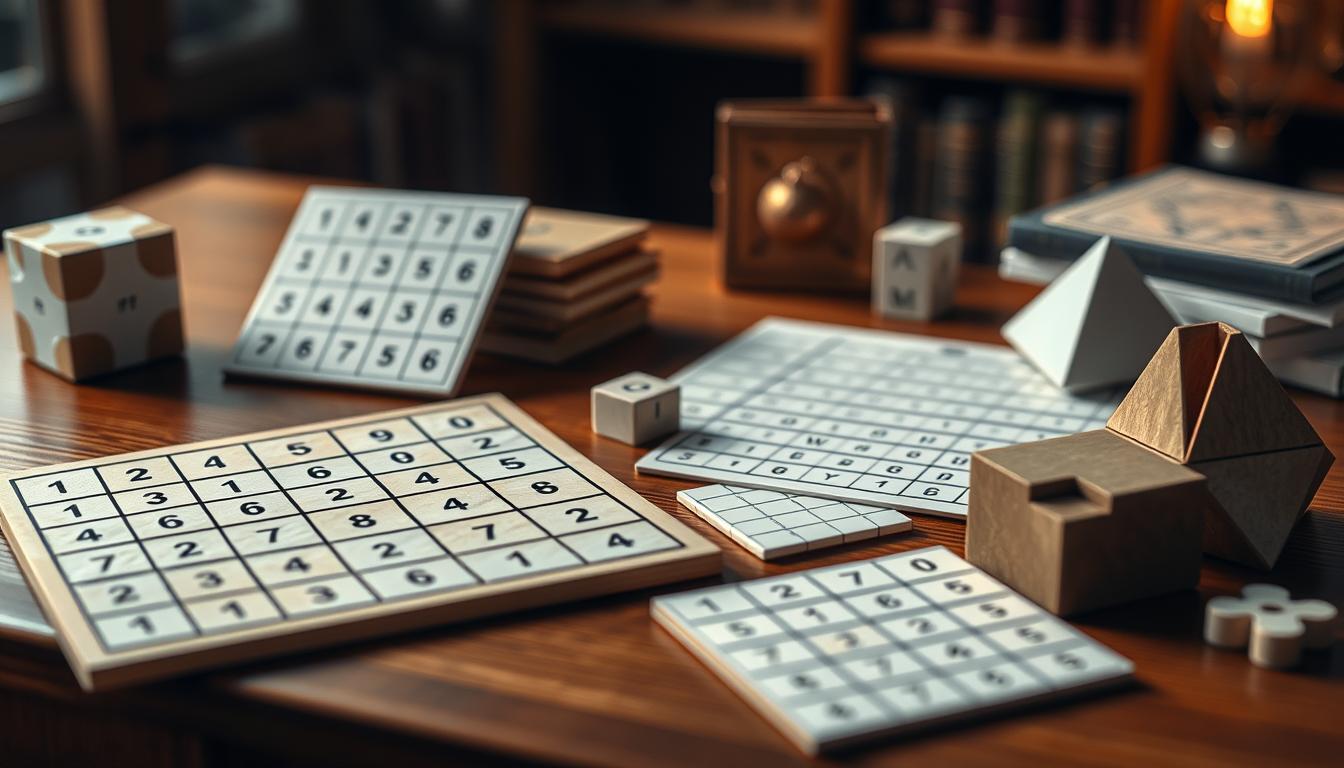For centuries, math puzzles have fascinated people around the world, challenging their minds and sparking curiosity. One such enduring puzzle is the magic square, a grid filled with numbers in a specific arrangement.
The magic square is more than just a simple grid; it’s a timeless math challenge that requires logic, reasoning, and problem-solving skills. Its significance extends beyond entertainment, as it has been used in various cultures for mystical and symbolic purposes.
Key Takeaways
- Understanding the concept of a magic square
- Exploring its historical significance
- Learning how to solve a magic square
- Discovering its cultural importance
- Enhancing problem-solving skills with math puzzles
What Is a Magic Square?
Imagine a number grid where the sum of numbers in every row, column, and diagonal is the same; this is what we call a magic square. It’s a fascinating logic game that has been intriguing mathematicians and puzzle enthusiasts for centuries.
Definition and Basic Properties
A magic square is a square grid filled with distinct positive integers in the range from 1 to n^2 such that each cell contains a different integer and the sum of the integers in each row, column, and diagonal is equal. This sum is known as the magic constant. Magic squares can be of various sizes, but they are typically categorized based on the number of cells along one side, referred to as the order of the square.
The Magic Constant Formula
The magic constant can be calculated using a simple formula: M = n(n^2 + 1)/2, where n is the order of the magic square. For example, in a 3×3 magic square, the magic constant is 15.
| Order (n) | Magic Constant |
|---|---|
| 3 | 15 |
| 4 | 34 |
| 5 | 65 |
Understanding the magic constant formula is crucial for constructing and analyzing magic squares, making it a fundamental aspect of this intriguing number grid puzzle.
The Rich History of Magic Squares
The magic square, a seemingly simple grid of numbers, has a rich and complex history that spans thousands of years, captivating mathematicians and puzzle enthusiasts alike with its unique properties and number magic.
Magic squares have been a subject of fascination across various cultures, serving not only as brain teasers but also holding spiritual significance.

Ancient Origins in China and India
The earliest recorded magic squares originated in ancient China, with the “Lo Shu Square” being a well-known example. This 3×3 grid is said to have been discovered on the back of a turtle in the 23rd century BCE. Similarly, in ancient India, magic squares were mentioned in the Brhat Samhita, an ancient text on astrology.
Magic Squares in Islamic Mathematics
During the Islamic Golden Age, mathematicians made significant contributions to the study of magic squares. Scholars like Ahmad al-Buni explored their properties and constructed larger magic squares, further enriching the field.
Western Adoption and Renaissance Fascination
The study of magic squares spread to the West during the Renaissance, where they became a subject of fascination among mathematicians and occultists. The intricate patterns and mathematical precision of magic squares captivated scholars, contributing to their popularity as both mathematical puzzles and objects of mystical study.
The historical journey of magic squares highlights their enduring appeal as a number magic that continues to inspire and challenge people today.
Types of Magic Squares
The world of magic squares is diverse, encompassing different types and orders. This diversity is what makes magic squares a fascinating math puzzle for many enthusiasts.
Odd-Order Magic Squares
Odd-order magic squares are those where the number of rows or columns is an odd number. The most well-known example is the 3×3 magic square, which is often considered the simplest form of a magic square. Constructing an odd-order magic square involves a specific method, such as the Siamese method, to ensure that the numbers are arranged correctly to achieve the magic constant.
A key characteristic of odd-order magic squares is their symmetry and the fact that they can be constructed using a straightforward algorithm.
Even-Order Magic Squares
Even-order magic squares, on the other hand, have an even number of rows and columns. They are more complex to construct than odd-order squares because there is no single, universally applicable method for all even orders. The 4×4 magic square is a popular example, often used in puzzle challenges. Even-order magic squares require more intricate methods to ensure that the sum of numbers in each row, column, and diagonal equals the magic constant.
Special Variations: Bimagic and Multimagic Squares
Beyond the basic classification, there are special variations of magic squares, such as bimagic and multimagic squares. A bimagic square remains magic even when all its numbers are squared. This property makes bimagic squares a particularly interesting math puzzle. Multimagic squares take this concept further, remaining magic under multiple transformations.
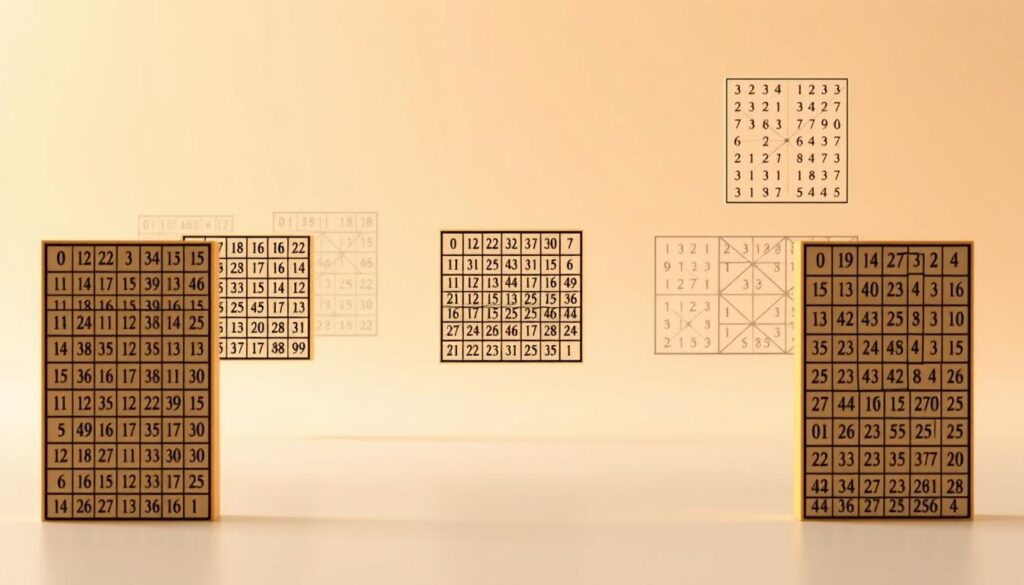
| Type of Magic Square | Characteristics | Examples |
|---|---|---|
| Odd-Order | Simple to construct using algorithms like the Siamese method. | 3×3, 5×5 |
| Even-Order | More complex construction; various methods apply. | 4×4, 6×6 |
| Bimagic and Multimagic | Remain magic under specific transformations (e.g., squaring numbers). | Bimagic squares, Multimagic squares |
The Magic Square – A Timeless Math Challenge Through the Ages
With its roots in ancient mathematics, the magic square continues to be a challenging and captivating logic game that transcends time and cultures. This intriguing puzzle has fascinated mathematicians, artists, and enthusiasts for centuries, offering a unique blend of mathematical significance and cultural impact.
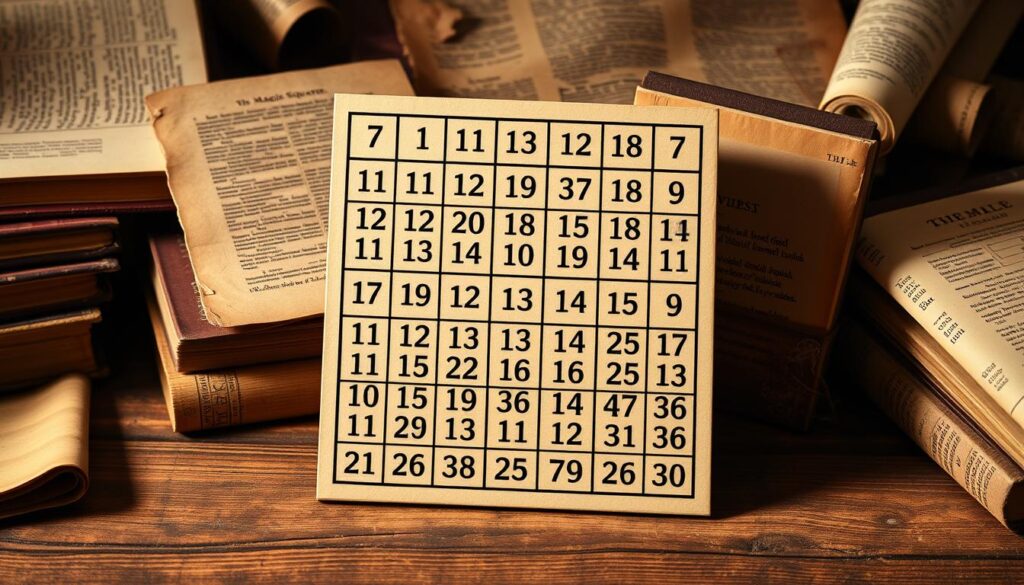
Mathematical Significance and Properties
The magic square is more than just a grid of numbers; it’s a complex mathematical construct with unique properties. The arrangement of numbers in a magic square is such that the sum of the numbers in each row, column, and diagonal is the same, known as the magic constant. This property makes it a fascinating subject for mathematical exploration, with applications in various areas of mathematics, including algebra and geometry.
The study of magic squares has also led to the development of new mathematical concepts and techniques, such as the use of combinatorial methods to construct and analyze these squares. Mathematicians continue to explore the properties of magic squares, seeking to understand their underlying structure and to discover new variations.
Cultural Impact and Famous Enthusiasts
Beyond its mathematical significance, the magic square has had a profound cultural impact, inspiring artists, writers, and thinkers throughout history. In ancient China, magic squares were associated with mystical and philosophical beliefs, while in Renaissance Europe, they were used in art and architecture to convey symbolic meanings.
Famous enthusiasts of magic squares include mathematicians like Leonhard Euler, who made significant contributions to the study of these squares, and artists like Albrecht Dürer, who incorporated magic squares into their works. The enduring appeal of magic squares lies in their unique blend of mathematical complexity and aesthetic appeal, making them a timeless challenge that continues to captivate people around the world.
How to Solve Magic Squares
Magic squares have been a timeless math challenge, and learning to solve them can be a fun and intellectually stimulating activity. Whether you’re a seasoned mathematician or a curious beginner, understanding how to construct and solve these intriguing number grids can be very rewarding.
To start solving magic squares, it’s essential to understand the different methods for various square sizes. For a 3×3 magic square, one of the most popular techniques is the Siamese method.
The Siamese Method for 3×3 Squares
The Siamese method is a straightforward technique for constructing a 3×3 magic square. It involves starting with the number 1 in the middle of the top row and then following a specific pattern of movements: up and to the right. If a move takes you outside the square, you wrap around to the opposite side. This method ensures that you end up with a magic square where the sum of each row, column, and diagonal is the same.
Here’s a step-by-step example of how to apply the Siamese method:
- Place the number 1 in the middle of the top row.
- Move up and to the right, placing the next number in the sequence.
- If you’re out of the grid, wrap around to the opposite side.
- Continue until all numbers are placed.
Techniques for 4×4 and Larger Squares
For larger magic squares, such as 4×4, different techniques are employed. One common method involves dividing the square into smaller sections and applying a pattern or using a more complex algorithm that ensures the magic constant is achieved across all rows, columns, and diagonals.
One technique for constructing a 4×4 magic square involves using a pattern that alternates the placement of numbers. This can be achieved by first filling the square with numbers in a straightforward sequence and then adjusting them according to a specific rule to achieve the magic square properties.
| Size | Method | Magic Constant |
|---|---|---|
| 3×3 | Siamese Method | 15 |
| 4×4 | Alternating Pattern | 34 |
Verification and Troubleshooting Tips
Once you’ve constructed a magic square, it’s crucial to verify that it meets the criteria: the sum of every row, column, and diagonal should be equal to the magic constant. If your square doesn’t meet these conditions, revisit your construction method and adjust accordingly.
Common mistakes to watch out for: Incorrectly placing numbers outside the grid or failing to wrap around correctly. Ensuring that you follow the chosen method precisely will help you avoid these pitfalls.
As you practice solving magic squares, you’ll find that it becomes an engaging brain teaser that challenges your problem-solving skills and enhances your understanding of number grids.
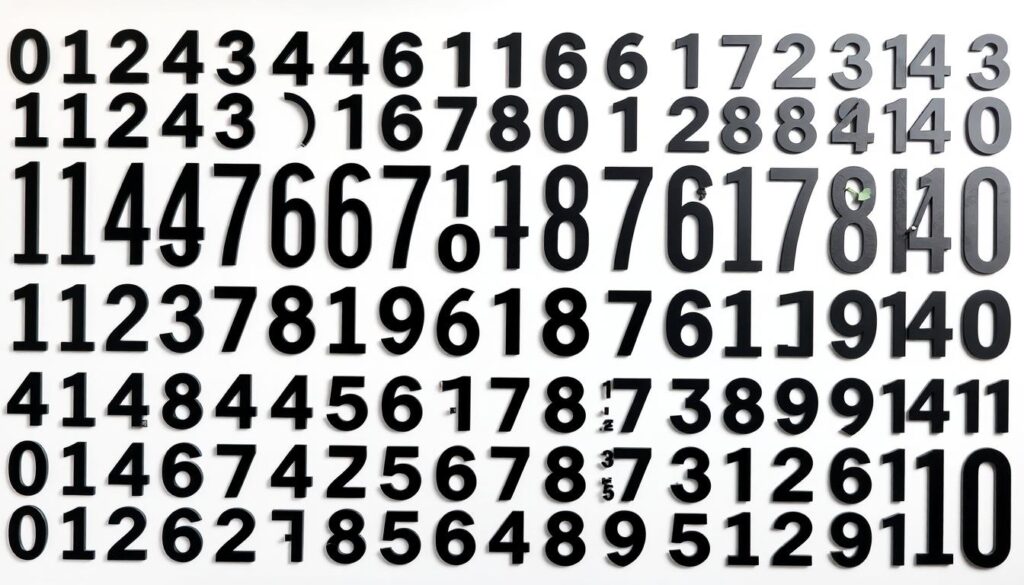
Fun Magic Square Challenges and Puzzles
For those who enjoy a good puzzle, Magic Squares present a unique and captivating challenge. Whether you’re a beginner or an experienced puzzle solver, there’s something for everyone in the world of Magic Squares.
Beginner Challenges: Complete the Square
Start with the basics by completing a Magic Square. This involves filling in the missing numbers so that each row, column, and diagonal sums up to the same constant. It’s a great way to understand the fundamental principles of Magic Squares.
- Try a 3×3 Magic Square to begin with.
- Gradually move on to larger squares like 4×4 or 5×5.
Intermediate Puzzles: Constrained Magic Squares
Once you’re comfortable with basic Magic Squares, take on the challenge of Constrained Magic Squares. Here, certain numbers or conditions are predefined, requiring you to think creatively within the given constraints.
Some examples include:
- Magic Squares with specific numbers already filled in.
- Squares with unique constraints, such as avoiding certain numbers.
Advanced Brain Teasers: Magic Cubes and Beyond
For the truly ambitious, Magic Cubes and other advanced variations offer a complex and intriguing challenge. These puzzles extend the principles of Magic Squares into three dimensions, requiring a deep understanding of mathematical patterns and spatial reasoning.
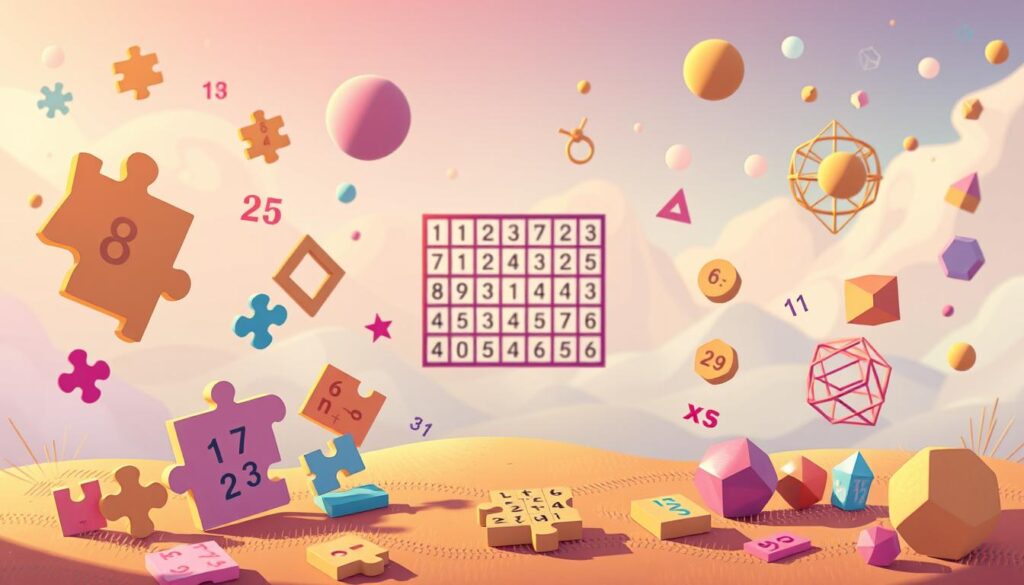
To further enhance your skills, try constructing your own Magic Squares or exploring different sizes and variations. The world of Magic Squares is full of endless possibilities and challenges waiting to be discovered.
Conclusion
The Magic Square has been a fascinating math challenge for centuries, captivating minds with its unique properties and number magic. From ancient origins in China and India to its adoption in Islamic mathematics and Western fascination during the Renaissance, the Magic Square’s rich history is as intriguing as its mathematical significance.
Through various types, including odd-order, even-order, and special variations like bimagic and multimagic squares, the Magic Square continues to challenge and inspire mathematicians and enthusiasts alike. Its cultural impact is evident in the works of famous enthusiasts who have contributed to its study and popularization.
Solving Magic Squares, whether using the Siamese method for 3×3 squares or techniques for larger squares, offers a fun and intellectually stimulating experience. The Magic Square’s charm lies in its simplicity and complexity, making it a timeless math challenge that continues to captivate audiences worldwide.
As we explore the world of number magic, the Magic Square remains a compelling puzzle that invites us to discover its secrets and appreciate its beauty. Its enduring appeal is a testament to the Magic Square’s significance in the realm of mathematics and beyond.
